This is the twenty-seventh post in a series about my possible line of descent from Eleanor of Aquitaine. In the first post, I explained how I discovered the possible line, and how I am going to verify it one generation at a time. In the last post, I proved that my twenty-second great-grandfather Guy of Dampierre, Count of Flanders, was the son of Margaret, countess of Flanders, and William of Dampierre.
Biography
Margaret of Flanders was born in June 1202 as the second child of Baldwin IX, count of Flanders and Hainault and Marie of Champagne. She was born while her father was away on crusade. When Margaret was two years old, her mother left her and her older sister Johanna in Flanders and followed her husband to the Holy Land.
Margaret’s mother died shortly after arrival in Acre in 1204, not knowing her husband had just been elected Emperor of Constantinople. He died in 1206. Their six-year-old daughter Johanna succeeded her father and became Countess of Flanders and Hainault in name, with a regent ruling in her place.
In 1212, when Johanna was twelve years old, the age of majority for girls in that period, she married a man eleven years her senior: Ferrand of Portugal. They jointly ruled Flanders until 1214, when Ferrand was imprisoned by the French King. Johanna, fourteen years old, was on her own.
One of Johanna’s advisors was Bouchard of Avesnes, a forty-year-old ordained cleric. He managed to marry Margaret, despite her being only ten years old not old enough to marry, in July 1212 in the Le Quesnoy castle.
Not long after Bouchard married her young sister, countess Johanna appealed to the pope to have the marriage annulled. In 1216, the pope ruled the marriage was invalid and excommunicated Bouchard, but the couple remained together. In 1221, while Bouchard was on his way to Rome to ask the pope for forgiveness, Johanna persuaded Margaret to leave Bouchard. By then, they had had three children together: Baldwin, John, and a second Baldwin, since the first child had died. Johanna arranged a new marriage for Margaret, to William of Dampierre, a younger son of the marshall of Champagne.
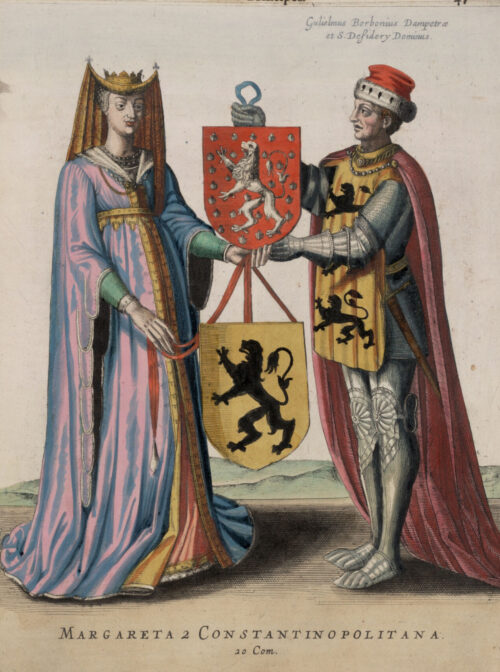
Margaret of Constantinople and Guy of Dampierre1
After Johanna died in 1244, her sister Margaret succeeded her as countess of Flanders and Hainaut. She had cast aside the children of her first marriage and named her children with William of Dampierre as her heirs. The Avesnes brothers appealed to the King of France, who determined in 1246 that her Avesnes children would succceed her in Hainault and her Dampierre children in Flanders.
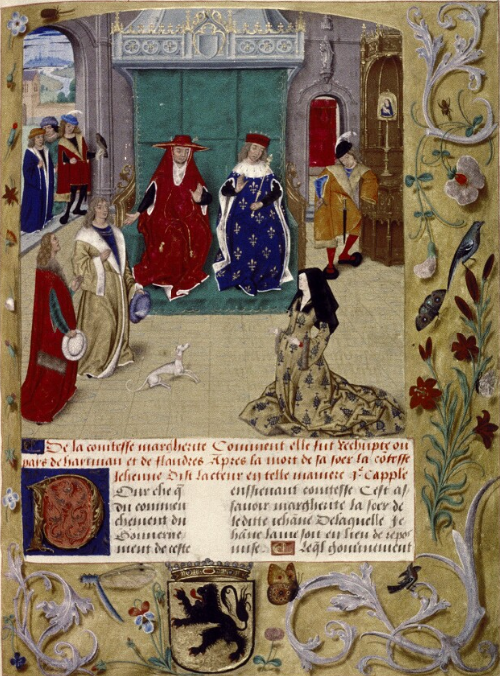
Margaret doing hommage to succeed her sister as countess of Flanders and Hainaut, before the King of France.2
Margaret continued to rule as countess of Flanders and Hainault. Her son William of Dampierre did hommage for Flanders to the King of France in 1247, though in title only. After his death in 1251, he was succeeded by his brother Guy of Dampierre. Margaret continued to rule Flanders until 29 December 1278, when she abdicated in favor of Guy. She died on 10 February 1280.3
Margaret of Flanders, daughter of Marie of Champagne
The biography above was based on modern publications. To meet the Genealogical Proof Standard, we need to go back to the original records created at the time of the events.
Wife of Bouchard of Avesnes, sister of Johanna of Flanders
The papal bull by pope Innocent III proclaiming the interdict against Bouchard of Avesnes and his wife, and declaring their marriage illegal, survives. It is dated 19 January 1216. It names Bouchard’s wife as “Margaritam sorerem dilecte … nobiles mulieris Johe: comitisse Flandrie” [Margaret beloved sister of the noble woman Johanna countess of Flanders]. The pope called out Bouchard for having “fraudulenter abducere ac eam detinere” [fraudulently abducted and detained] Margaret.4
Daughter of Baldwin of Flanders and Hainaut
In a charter of July 1246, Margaret, countess of Flanders and Hainaut, declared that her father count Baldwin count of Flanders and Hainaut and his predecessors had taken the abbey of Vaucelles under his protection.5
On 17 December 1195, Baldwin, county of Flanders, confirmed the protection that Thierry and Philip, counts of Flanders, accorded to the abbey of Vaucelles.6
The content of the two charters is similar, with the 1246 charter confirming the protection offered in the 1195 charter. This proves that Baldwin, count of Flanders in 1195 was the Baldwin, count of Flanders and Hainaut who was mentioned as the father of Margaret, countess of Flanders and Hainaunt in the 1246 charter.
Sister of Johanna, daughter of Baldwin of Flanders and Hainaut
Two charters show that Margaret, countess of Flanders, had a sister J[ohanna], countess of Flanders and Hainaut. In February 1245, Margaret, countess of Flanders, donated 20 pounds to a hospital in Valenciennes according to her late sister “J.” countess of Flanders and Hainaut’s last wishes.7
In February 1232, Margaret lady of Dampierre, wife of William of Dampierre, sister to J., countess of Flanders and Hainaut, confirmed a donation to the church of the Holy Mary in Loos.8
On 16 April 1218, Johanna, countess of Flanders and Hainaut, confirmed the donation her father B., count of Flanders and Hainaut, had made to the church of the Holy Mary in Loos when he was about to go to Jerusalem.9 The details of the donation and the recipient show that this is the donation that Margaret confirmed in 1232. The charter does not give her father’s full name, just his initial and titles.
The original charter issued by her father for this donation also survives. On 14 April 1202, Baldwin, count of Flanders and Hainaut, about to go to Jerusalem, issued a charter giving a donation to the church of the Holy Mary in Loos, with the consent of his wife, Marie.10 The contents of this charter match that of the donation mentioned in Johanna’s charter, identifying her father as Baldwin, count of Flanders and Hainaut. Since Margaret confirmed this charter, naming Johanna as her sister, that implies Margaret was the daughter of Baldwin too.
Marie, wife of Baldwin count of Flanders and Hainaut
Several other charters identify the wife of Baldin, count of Flanders and Hainaut as Marie.
In 1198, the collegiate chapter of Soignies promised to commemorate the anniversary of the deaths of “Balduini Flandrie et Hainoie comitis et eius coniugis Marie comitisse” [Baldwin count of Flanders and Hainaut and his wife Marie, countess]. The charter specifies this will be “post eorum decessum,” after their deaths.11 This indicates they were still living when this charter was issued.
In 1203, Marie, countess of Flanders and Hainaut, gave a donation to the hospital in Oudenaarde, with the knowledge and consent of her beloved lord and husband, count Baldwin of Flanders and Hainault.12
Marie sealed the charter with her seal, which is still attached to the charter. The front of the seal is badly damaged and illegible, but the counter-seal on the back has the text “Comitis Trecensis Filie” [daughter of the Count of Troyes]. This shows that Marie was the daughter of the count of Troyes.
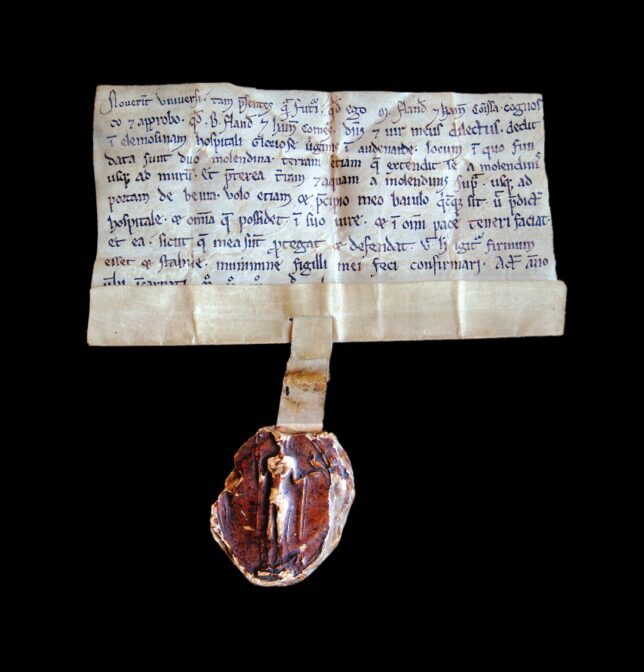
1203 charter
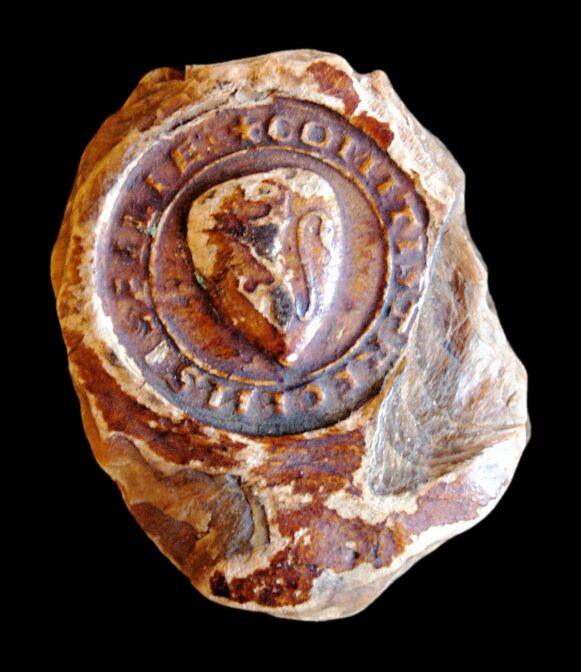
counter-seal, 1203
Daughter of the count of Troyes and Champagne
The marriage of Baldwin, count of Flanders and Hainaut is described in the Chronicles of Hainaut. In 1179, the marriage contract was agreed with Henry, count of Troyes, commonly known as a count of Champagne, for the marriage of Henry’s daughter Marie to Baldwin, the future count of Flanders and Hainaut.13
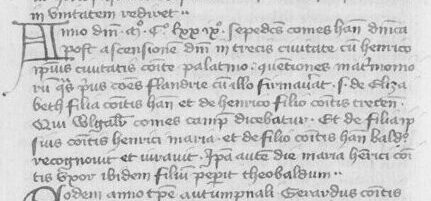
Annals of Hainaut
The 15th century manuscript shown here is the earliest surviving copy.14 The writer of the chronicle, Gislebert de Mons, held various positions at the court of the count of Hainaut:
- chaplain, before 1175
- second notary of the count, 1180-1184
- (first?) notary of the count, probably since 1185
- chancellor of Hainaut from 1178 until 1195
- chancellor of Namur, 1192.15
These circumstances make him a reliable informant for the events that happened in this period since he would have had personal knowledge of the marriage, and may even have helped draft the marriage contract. This shows that Baldwin of Flanders was already betrothed to Marie, the daughter of the count of Troyes/Champagne, in 1179, and did not have another wife between that time and 1203, when his wife Marie’s seal named her as the daughter of the countess of Troyes. Marie must have been the mother of his children.
Conclusion
No contemporary evidence directly identifies the mother of Margaret, countess of Flanders and Hainault, but indirect evidence identifies her as Marie, daughter of the count of Troyes and Champagne.
A charter of July 1246 named Margaret as the daughter of count Baldwin of Flanders, confirming donations he made in 1195. This relationship is confirmed via her sister. A papal bull of 1216 and charters of 1232 and 1245 identified Margaret as the sister and successor of Johanna, countess of Flanders and Hainaut. Margaret confirmed donations made by Johanna. Johanna confirmed these same donations by her father, Baldwin, count of Flanders and Hainaut.
Charters of 1198, 1202, and 1203 identify Baldwin’s wife as Marie. The chronicle of Hainault named her as the daughter of the count of Troyes and Champagne. This is confirmed by her seal, which identified her as the daughter of the count of Troyes. Baldwin and Marie were betrothed in 1187 and she was still his wife in 1203, when she sealed the charter.
That’s twenty-six generations down, only two to go!
Next up: Generation 27: Marie of Champagne.
Sources
- Antonius Sanderus, Flandria Illustrata (Cologne, 1641), 47; digitized at University of Ghent (https://lib.ugent.be/catalog/rug01%3A000791673 : accessed 26 December 2019).
- Jacques de Guyse (author), Jean Lessabe (translator), annals of Hainaut, circa 1500, fol. 28r; images, Digital Bodleian (https://digital.bodleian.ox.ac.uk/inquire/p/0f235d07-fa44-4405-9cc7-e819f0f6015c : accessed 31 May 2019); citing MS. Douce 205, Bodleian Library, Oxford, UK.
- The information in this biography is based on several books.
Gerben Graddesz Hellinga, Graven van Vlaanderen (Zutphen, Netherlands: Walburg Pers, 2013), 87-90.
Edward De Maesschalck, De Graven van Vlaanderen (861-1384) (Antwerp, Belgium: Davidsfonds, 2019), 317-350.
Thera Coppens, Johanna en Margaretha: Gravinnen van Vlaanderen en Prinsessen van Constantinopel (Amsterdam: Meulenhoff Boekerij, 2019). - Pope Innocent III, interdict against Bouchard of Avesnes, charter, 19 January 1216; “Archim,” digital images, Archives Nationales (http://www2.culture.gouv.fr/documentation/archim/dossiers.htm : accessed 21 March 2021), record 22; citing cote AE/III/141.
- Margaret of Flanders and Hainaut, charter confirming the protection of Vaucelles abbey, July 1246; imaged at DiBe 23237, Diplomata Belgica (https://www.diplomata-belgica.be/charter_details_en.php?dibe_id=23237: accessed 15 September 2020); citing Lille, Archives départementales du Nord [AD], 28H 6/178.
- Baldwin of Constantinople, charter confirming the protection of Vaucelles abbey, 17 December 1195; imaged at DiBe 295, Diplomata Belgica (https://www.diplomata-belgica.be/charter_details_en.php?dibe_id=295: accessed 27 April 2021); citing Lille, Archives départementales du Nord [AD], 28H 5/147.
- Margaret of Flanders and Hainaut, charter confirming donation to Valenciennes, February 1245; imaged at DiBe 37667, Diplomata Belgica (https://www.diplomata-belgica.be/charter_details_en.php?dibe_id=37667 : accessed 15 September 2020); citing Lille, Archives départementales du Nord [AD], 40H 556/1345 A.
- Margaret of Dampierre, charter confirming donation to church in Loos, February 1232; imaged at DiBe 38855, Diplomata Belgica (https://www.diplomata-belgica.be/charter_details_en.php?dibe_id=38855 : accessed 15 September 2020); citing Lille, Archives départementales du Nord [AD], 27H 17/26.
- Johanna of Flanders, charter confirming donation to church in Loos, 16 April 1218; imaged at DiBe 33847, Diplomata Belgica (https://www.diplomata-belgica.be/charter_details_en.php?dibe_id=33847 : accessed 15 September 2020); citing Lille, Archives départementales du Nord [AD], 27H 17/249.
- Baldwin of Flanders and Hainaut, charter, donation to church in Loos, 14 April 1202; imaged at DiBe 13188, Diplomata Belgica (https://www.diplomata-belgica.be/charter_details_en.php?dibe_id=13188 : accessed 15 September 2020); Lille, Archives départementales du Nord [AD], 27H17/241.
- Collegiate chapter of Soignies, charter about perpetual anniversaries for the counts of Flanders, 1198; imaged at DiBe 2750, Diplomata Belgica (https://www.diplomata-belgica.be/charter_details_en.php?dibe_id=2750 : accessed 27 July 2020); citing Mons, Archives de l’Etat [AE], AEM.08.001 – Trésorerie comtes Hainaut 9.
- Marie countess of Flanders to Hospital of Oudenaarde, charter, 1203; imaged at DiBe 13443, Diplomata Belgica (https://www.diplomata-belgica.be/charter_details_en.php?dibe_id=13453 : accessed 22 December 2020); citing Oudenaarde, records of the public center for societal wellbeing (OCMW), fonds Onze-Live-Vrouwehospitaal [Our Dear Lady Hospital] 458.
- Gislebert de Mons, chronicle of Hainaut, fol 35v, entry for marriage contract of Henry of Champagne’s daughter Marie and Baldwin of Hainault, 1179; ms. Latin 11105, Bibliothèque de France, Paris, France; imaged as “Chronique des comtes de Hainaut, par Gilbert de Mons,” Gallica (https://gallica.bnf.fr/ark:/12148/btv1b9076717s/ : accessed 12 February 2021).
- Léon Vanderkinderen, compiler, La Chronique de Gislebert de Mons (Brussels, Belgium: P. Imbreghts, 1904), iii.
- Vanderkinderen, La Chronique de Gislebert de Mons, xx.
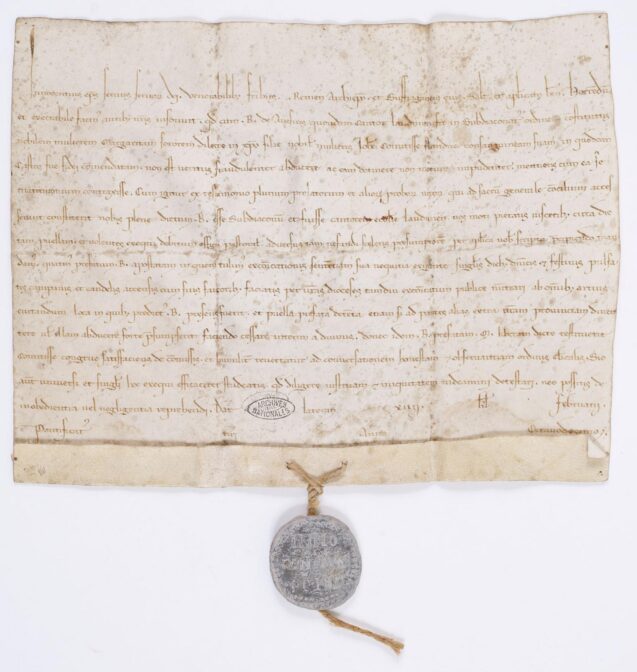
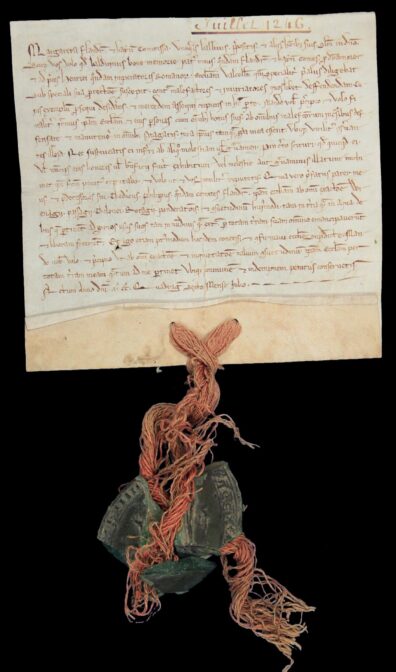
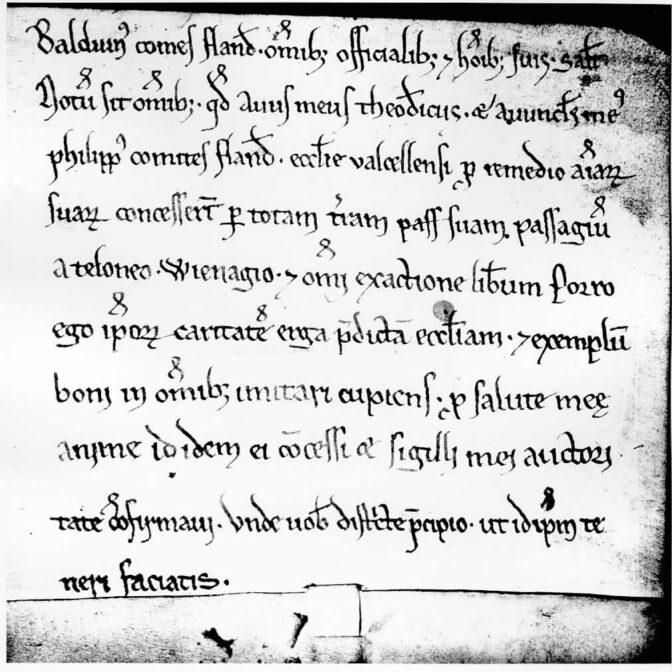
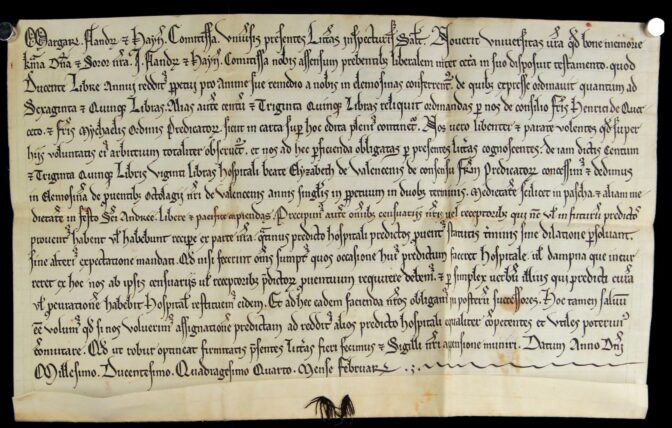
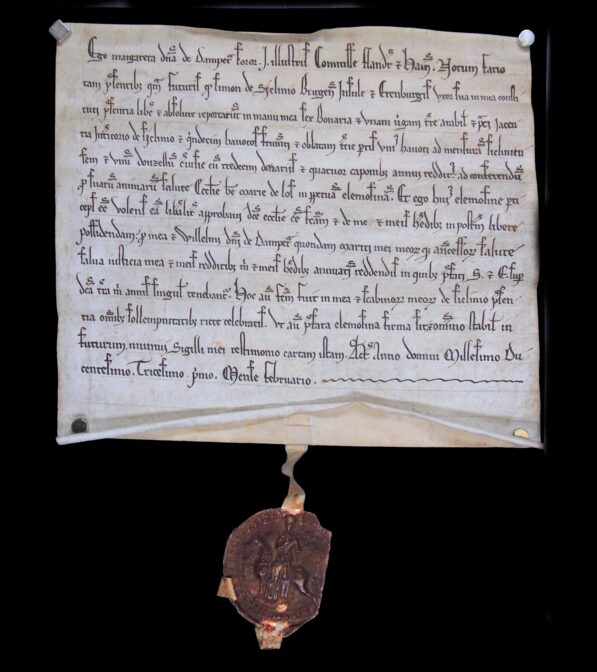
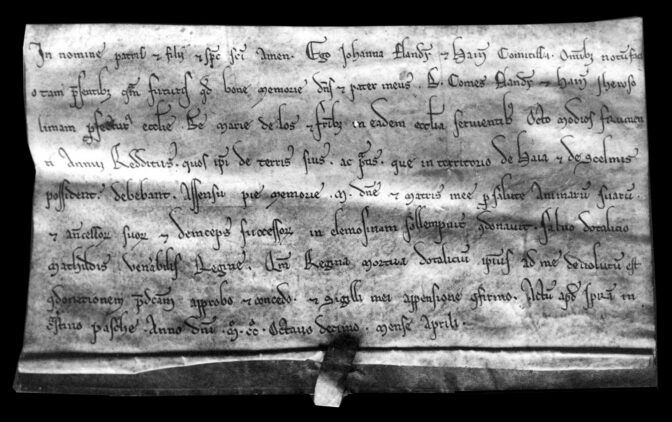
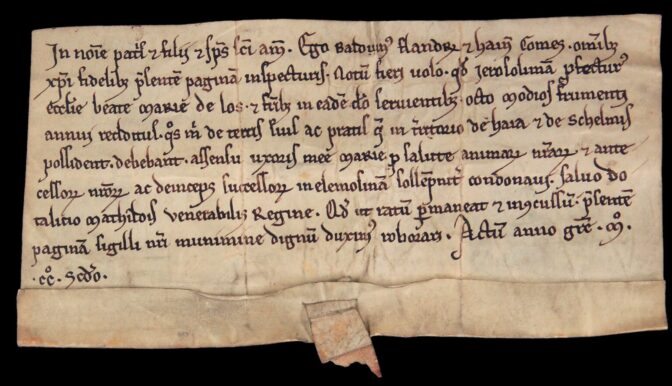
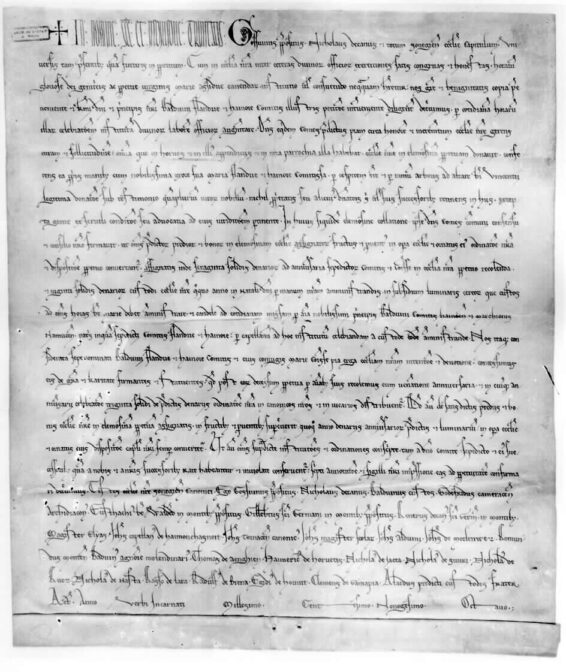


Thank You
Looking forward to the final two installments.
Me too. I have been working on the research but it is a lot of work. Records in France are not as accessible online as in the Netherlands or Belgium. I will probably need to do on-site research and have not been able to go there.